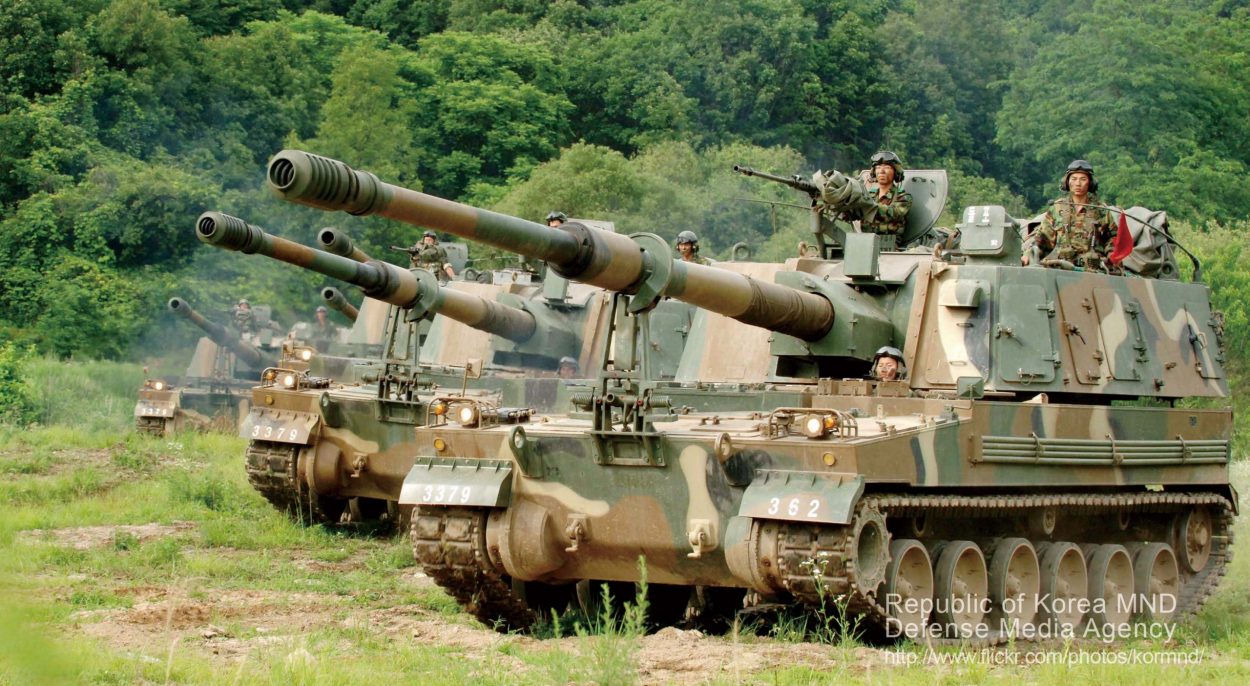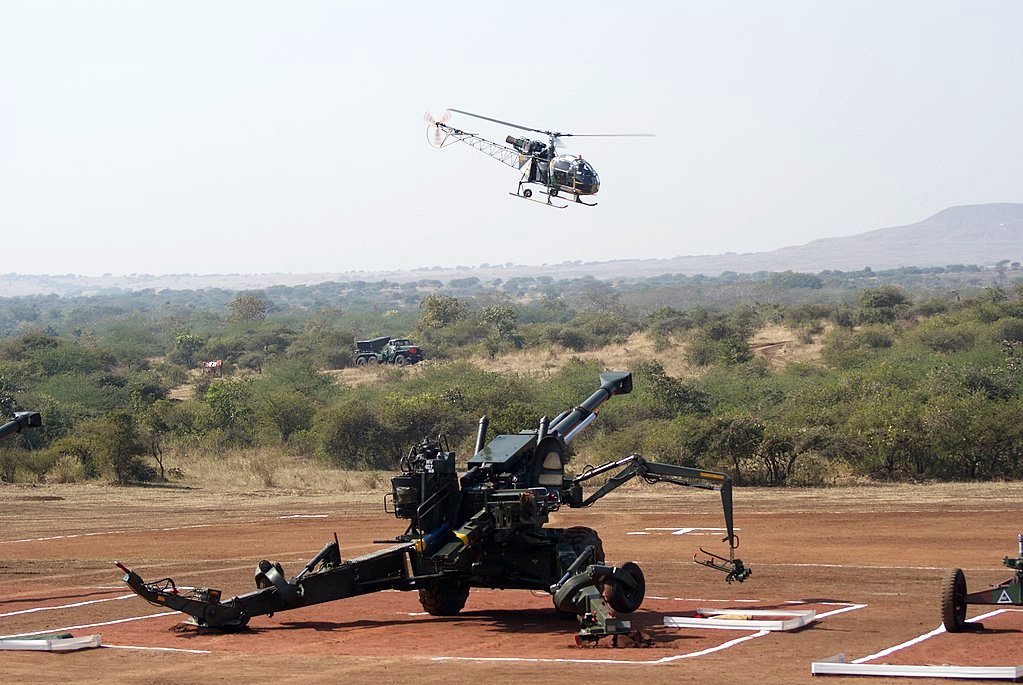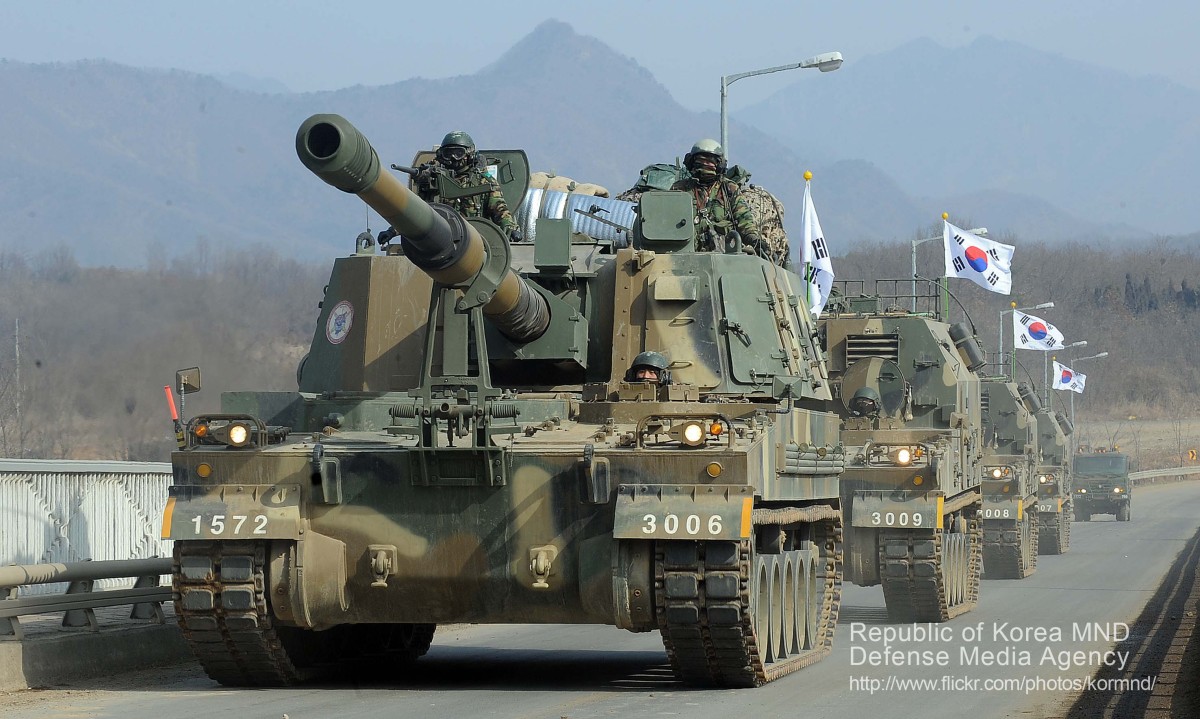Hanwha Aerospace has signed a new USD 253 million contract with Larsen & Toubro (L&T) to supply components for 100 additional K9 Vajra-T self-propelled howitzers to the Indian Army.
The contract signing ceremony took place at the Embassy of the Republic of Korea in New Delhi, marking a significant milestone in the defense partnership between South Korea and India.
This second contract builds on the successful delivery of the initial 100 units ordered in 2017, which demonstrated exceptional performance across India’s diverse operational environments.
The new contract marks a significant advancement in the established production framework. While the first K9 Vajra-T program achieved over 50% local production, the new contract aims to increase this to 60% through expanded industrial cooperation.
“This follow-up order reflects the deepening defense partnership between Korea and India,” said Jae-il Son, CEO and President of Hanwha Aerospace. “We will continue to be a trusted, reliable partner for India’s defense capabilities in the years ahead, supporting India’s vision for defense manufacturing self-reliance.”
Earlier in December last year, the Indian Ministry of Defense (MoD) signed a contract with Larsen & Toubro Limited to procure 155 mm/52 caliber K9 VAJRA-T Self-Propelled Tracked Artillery Guns for the Indian Army under the Buy (Indian) category at a total cost of Rs 7,628.70 crore.
“The procurement of K9 VAJRA-T will catalyze the artillery modernization and enhance the overall operational readiness of the Indian Army. This versatile artillery gun, with its cross-country mobility, will play a pivotal role in enhancing the firepower of the Indian Army, enabling deeper strike with precision,” the Indian MoD has said in a statement.
This project will generate employment of more than nine lakh man-days over a period of four years and encourage active participation of various Indian industries, including MSMEs.
K9 Vajra In The Indian Army
The Indian Army is already operating 100 K9 VAJRA-T. The contract for the initial 100 K9 VAJRA-T was signed in 2017.
L&T had won the contract for the first batch of 100 K9 Vajra-T platforms through global competitive bidding and after a successful field evaluation. The Company delivered the Vajra Platforms ahead of schedule, with the delivery of the 100th K9 Vajra-T platform taking place in 2021.

“Like the first batch, the second batch of the K9 Vajra-T too will be manufactured at our Armoured Systems Complex at Hazira in Gujarat,” said Mr Arun Ramchandani, Senior VP & Head – L&T Precision Engineering & Systems.
Notably, the new artillery systems will feature upgrades for high-altitude deployment, ensuring India’s readiness to counter challenges in regions like Ladakh.
These artillery guns were initially deployed in Rajasthan at the India-Pakistan border. However, following the India-China stand-off in the Ladakh sector in 2020, these guns were repurposed for operations in the Ladakh sector as well.
The K9 Vajra-T has proven its exceptional capabilities across India’s challenging terrains with its advanced 155mm/52-caliber gun system. The artillery system delivers precision fire at long range while maintaining a high rate of fire in burst mode and sustained operations.
These guns can fire up to six rounds per minute in burst mode and sustain a rate of fire of 2-3 rounds per minute over prolonged periods.
These artillery guns, a localized variant of Hanwha Aerospace’s globally celebrated K9 Thunder Self-Propelled Howitzer (SPH), have a range of over 40 km and can launch projectiles at a speed of around 65 kilometers per hour.
Indian Army’s Artillery Modernization Drive
The K9 Vajra-T artillery guns are an important part of the Indian Army’s artillery modernization drive. Under this drive, the Indian Army is integrating several 155 mm gun systems, including K-9 Vajra, Dhanush, and Sharang.
In addition, the Indian Army is in the process of inducting other 155 mm gun systems, such as the Advanced Towed Artillery Gun System (ATAGS), Mounted Gun System (MGS), and Towed Gun System (TGS).
The Advanced Towed Artillery Gun System (ATAGS), a 155mm/52-caliber howitzer, is an Indigenous Indian artillery system developed by DRDO, with Tata Advanced Systems and Bharat Forge as key development partners.
The Army has also ordered 114 Dhanush artillery guns, India’s first indigenously built artillery gun. These guns were manufactured by Advanced Weapons and Equipment India Limited (AWEIL), which was previously part of the Ordnance Factory Board (OFB).
The first gun was inducted in April 2019, and the Army is expecting to receive all the guns by 2026.

Additionally, India is investing in the Pinaka Multi-Rocket Launch Systems (MRLS). In February this year, India signed contracts worth Rs 10,147 crore for various ammunition for the Army’s Pinaka MRLS.
Pinaka Multiple Rocket Launch System (MRLS) has a range of 40 km for Mark-I and 60 to 75 kilometers for the Mark-II and Enhanced versions. The Guided Pinaka can strike targets beyond 75 km. Pinaka ER (Extended Range) has a range of 90 km. Work is on to enhance the range to 120 km and further to 300 km.
South Korea’s K9 Howitzer
The K9 has firmly established itself as one of the most sought-after pieces of military equipment on the international arms market.
The K9 Thunder is a 155mm/52 caliber self-propelled howitzer designed and produced by South Korea’s Hanwha Aerospace. It can carry up to 48 projectiles and is capable of launching six rounds per minute.
Since its debut in 1999, the K9 has evolved into a cornerstone of South Korea’s defense exports, making up more than half of global self-propelled howitzer orders. As of last year, over 1,400 units of the K9 have been delivered or are slated for export to various countries.

South Korea itself operates a large fleet of K9 howitzers, which are deployed along the heavily fortified demilitarized zone (DMZ) separating it from North Korea.
The K9’s ability to operate in the challenging mountainous terrain of the DMZ is a key feature, as it is equipped with an advanced hydropneumatic suspension that helps it navigate rough landscapes with ease.
The K9’s five-man crew operates in a fully enclosed environment, protected from nuclear, biological, and chemical threats, with 19mm steel armor providing defense against heavy machine-gun rounds and shrapnel.
Additionally, a .50 caliber machine gun mounted on the turret offers close defense and limited air defense capabilities.
The K9 Thunder is widely adopted around the world, with deliveries either completed or in progress to countries including Australia, Egypt, Estonia, Finland, India, Norway, Poland, Romania, and Turkey.
- Sumit Ahlawat has over a decade of experience in news media. He has worked with Press Trust of India, Times Now, Zee News, Economic Times, and Microsoft News. He holds a Master’s Degree in International Media and Modern History from The University of Sheffield, UK.
- He can be reached at ahlawat.sumit85 (at) gmail.com




